[category science-report]
Crew 289 – Deimos
Dec 24th, 2023 – Jan. 6th, 2023

Crew Members:
Commander: Adriana Brown
Executive Officer and Crew Journalist: Sara Paule
Crew Geologist: Eshaana Aurora
Crew Engineer: Nathan Bitner
Health and Safety Officer and Crew Astronomer: Gabriel Skowronek
GreenHab Officer: Riya Raj
Crew Projects:
Title: Remote Station Monitoring
Author: Nathan Bitner
Objectives: Demonstrate usefulness of supplying on-site crew and mission control with real time habitat data
Current Status: We have created a prototype air quality monitor that successfully sends data to an online dashboard. Right now, this board stops functioning after any WIFI connection issues, requiring a manual reset, and quickly drains battery power. In the next two days we plan to fix these issues by putting the raspberry pi into idle mode when not in use and having the board automatically reset itself after any runtime errors. After our prototype is robust enough to function on its own we plan to create four more identical modules for other station rooms and then monitor airlock status on the same dashboard using magnetic reed switches.
EVAs: None
Title: Recording Dust Levels in the HAB
Author(s): Gabriel Skowronek
Objectives: Qualitatively determine the dust levels before and after cleaning procedures
Current Status: Several swab observations have been made throughout the Habitat to understand how much dust was present prior to arrival. In the lower deck of the Hab, swabbing was done underneath the First Aid station and on top of the shelf that holds the comms equipment. In the upper deck, swabbing was done on top of Pantry 3 and the top of the cabinet that has the comms equipment. After initially swabbing, the surfaces were cleaned and wiped down of any dust with a Clorox wet wipe to get a ‘clean’ baseline. In the coming days, swabbing will be done to track subsequent dust accumulation. Only one swab has been conducted thus far, 24 hours after surface cleaning and it was found that there was negligible dust accumulation with only a few dark fibers and fine light colored particles found on the cotton swabs. Swabbing will continue to see how much dust accumulates in the four chosen spots and will be compared against each other to see where dust settles the most.
EVAs: None
Title: Astronomy on Mars
Author(s): Gabriel Skowronek
Objectives: Determine the period of variation for SW Tauri, a Cepheid variable. Furthermore, it will be helpful to make impressive pictures of the Crab and Orion nebulae.
Current Status: Three photometry measurements have been taken of SW Tauri thus far. One has been taken per night but over the coming days, measurements will be taken twice per night at 4-hour intervals to acquire more data points for the light curve. The light curve will begin to take shape over the coming days as intensity measurements will begin to be plotted over time. The initial two measurements were slightly over exposed, so adjustments were made in the exposure time to get proper exposures. There have been some delays in imaging the Crab Nebula as the MDRS-WF seems to image several days after making the initial request. One set of images has been completed but came out to be over exposed, so a new request has been put in with adjusted exposure times and we are currently awaiting images to be taken. In the coming days, the Orion Nebula will also be imaged but further research will need to be done into the proper exposure times.
EVAs: None
Title: Comparison of Self-selection Traits versus Skill Utilization by Mars Colonists
Author(s): Sara Paule
Objectives: Examine the skills (e.g., flexibility, leadership, communication, problem-solving, domestic skills, etc.) most used by “colonists” in their day-to-day activities at the Mars Desert Research Station (MDRS) versus their ratings of importance pre- and post-mission.
Current Status: Pre-mission data has been downloaded from Qualtrics. The crew has completed 5 days-worth of daily surveys from Sol 1 (December 25, 2023) through today, Sol 6 (December 26, 2023). These were completed at the end of the mission day as planned. Paper survey results have been entered into an Excel database in preparation for post-mission data analysis. The crew will continue to complete daily surveys throughout mission and paper data will be converted to digital format. Post-mission surveys will be sent out after return to Earth.
Title: Establishing Best Practices in Mission Reporting from Prior Crew Reports
Author(s): Sara Paule
Objective 1: Establish the average word length of the various report styles.
Objective 2: Examine whether crew members are most often referenced by surname/family name, given name, or both.
Objective 3: Determine common subject matters within reports, such as references to meals, sleep, showering, etc.
Current Status: Pre-mission all the reports for the past calendar year were downloaded from the MDRS Reports webpage. A sample from each mission of the last year uploaded to the reports repository for both the Journalist Report and Sol Summaries have been randomly selected for analysis. Additionally, random samples of the Journalist Report and Sol Summaries were pulled from the emails of the prior crew (288) received pre-mission. In total, 15 crews were identified during that time period and 14 Journalist and 13 Sol reports were acquired using the aforementioned methods. Word length and character length have been calculated for each. Next steps will be to begin flexible qualitative coding to assess content.
EVAs: None
Title: Martian analog paleotemperature reconstruction
Author(s): Adriana Brown
Objectives: (1) Sample a measured section of sediments up the side of Hab Ridge and (2) identify the percent of carbonate present in sediments, (3) collect Pycnodonte fossils from the Tununk shale near Hab Ridge for carbonate clumped isotope analysis, (4) identify bentonite presence and frequency within the Tununk Shale, and (5) catalog and prepare samples for drilling.
Current Status: Progress on all objectives has been made. 36 fossils have been collected from Hab Ridge, cleaned, and catalogued. They are ready to return to Earth for geochemical analysis. The carbonate percent weight experiment is up and running with initial sediment samples from fossil collection sites dissolved in 0.1 M HCl and currently drying. 93 1.0 mL sediment samples from two measured sections of Hab Ridge have also been collected, and selected samples from these sections will be added to the percent carbonate experiment this upcoming week. These samples will be fully catalogued at MDRS and then will be ready to return to Earth for stable carbon isotope analysis at the University of Michigan. Lastly, several bentonite “swarm” locations have been noted, with beds documented at Barrainca Butte and sampled at Hab Ridge.
EVAs: Two EVAs to Hab Ridge to collect fossils and sample two measured sections, one EVA to Barrainca Butte to evaluate Pycnodonte presence and bentonite swarms.
Title: Mars Exploration by Origami Robot and Drone Scouting or Transportation
Author(s): Aditya Arjun Anibha
Objectives: Apply the concept of transformable origami robots that can exhibit multiple types of locomotion and test their ability to supplement exploration. Investigate feasibility of transporting robot using drone and scouting locations of interest prior to exploration.
Current Status: During EVA 3, the drone was tested for its carrying capacity within stability limits with cardboard box container carrying rocks with a suspended transparent fishing line harness to avoid sensor interference and keep payload at safer proximity than taping it onto the drone. It was able to carry up to 350 grams but wobbled due to swinging or when directly underneath the drone’s height sensor. The drone would therefore be better used to support the robot rather than carry it due to weight limits.
During EVA 7, the robot was tested for its ability to traverse mild rocky, uneven and sloped terrain. It was successfully made to travel at a speed of 0.3 m/s for 8 meters in its closed wheel configuration and 57 meters in its open wheel configuration, while supported by a tugging string to lighten its weight closer to Martian conditions. This was across uneven offroad terrain with varied distributions of rocks between 1 cm to 3 cm in diameter. It climbed three mounds with slope angles varying upto a maximum of 20 degrees. The robot’s total scale-measured mass on Earth is about 1.5 kg. Its effective scale-measured mass reduced to around 0.9 kg when vertically tugged or supported, which is higher than its expected scale-measured mass on Mars of 0.6 kg. Therefore, we can determine that it would operate freely without the tug on Mars.
The robot will now undergo maintenance before executing another EVA in Candor Chasma to test it with diverse terrain environments, where testing its jumping and peristaltic motion capabilities will be a priority. The drone will be used in place of a tugging string to support the robot’s motion and lighten its weight such that it experiences motion similar to that which it would on Mars
EVAs: EVA 3 for Drone Capacity Testing with Suspended Payload Harness and Drone Scouting of Candor Chasma conducted from Pooh’s Corner, EVA 7 for Origami Robot Exploration Testing at Cowboy Corner
Title: Miniaturized Martian Agrivoltaics
Author(s): Eshaana Aurora
Objectives: To comprehensively test the impact of solar and artificial irradiation on crop yields within an enclosed, module-like environment. To understand the feasibility of a miniaturized agrivoltaic farm within the MDRS Greenhab.
Current Status: The mini farm has been successfully assembled in a discreet corner of the Greenhab, addressing the low humidity issue caused by a few open spots with a makeshift solution—cling wrap placed on top of pots secured by rubber bands. Notably, the preliminary results indicate that the fully shaded Kale sapling has sprouted the first few shoots, while the non-shaded ones are yet to show signs of growth. Following successful troubleshooting and error management, the arduino and sensors, including temperature, IV Tracer, and Solar irradiation sensors, are now fully operational. The next phase involves attaching these sensors to the mini farm for real-time data collection. Over the coming days, a routine will be established, wherein data will be read and uploaded to Google Drive during the communication window, and plants will be watered and monitored for continued sprouting and growth.
EVAs: 0
Title: LiDAR Scanning of Terrain
Author(s): Riya Raj
Objectives: Will use phone apps to provide accessible scans of the terrain.
Current Status: I have been using Polycam on IOS to help me get more visuals on the structures that are near the MDRS campus. The most important thing to keep in mind is to include efficiency if you want to expand. For example, our recent crew EVAs were helpful in showing me large terrain and flat terrain that could potentially be used for solar farming or other habitats! Since MDRS is a growing program, we should look into things that will help with further research! I took an image scan and LiDAR scan of Hab Ridge and the MDRS campus. This lets us know what exists and what things could be improved for development. I have been loading 150+ scans during our COMMS windows to see how we can effectively image all structures. Most scans showcase layering, formations, and structure of the terrain!
LiDAR also helps with hazard assessments to scan what large rocks could pose a threat in areas of frequent visitors. As someone who is in Civil, I would like my work to reflect in what ways we can help the Earth and people. We need to learn to adapt and mitigate solutions to the current climate change issues. Expanding the campus with more renewable sources such as solar would be helpful!
Title: Radiation on Kale:
Author: Riya Raj
Objectives: Work on sustainable methods of growing veggies using simulations in hydroponics to provide fresh nutrients for the body.
Current Status: Hydroponics is a good example of controlled agricultural practices that can help increase plant growth time rates and heath. During my time at MDRS, I have been using 12-hour intervals with a control vs. variable experiment. The variable experiment includes the addition of H2O2 with the hydroponics module to compare the plant roots and leaves. I will be conducting image scans of the roots/leaves while monitoring the water pH/temp, surrounding temp/humidity, and plant cell structure with microscope views.
Hydrogen peroxide and radiation are distinct in their effects on plants. Radiation, such as ultraviolent (UV) radiation or ionizing radiation, can lead to the formation of reactive oxygen species (ROS) within plant cells. Similarly, hydrogen peroxide is a reactive oxygen species. When plants are exposed to stressors like radiation or hydrogen peroxide, they may experience oxidative stress, which can cause damage to cellular components such as proteins, lipids, and DNA.
Space exploration cannot happen without understanding what makes humans thrive. Learning from many agricultural practices here on earth has helped us look into sustainable ways to support human living for long term space missions. Bioregenerative life support systems are the way to include efficiency and optimization in human health. We should look further into how the extreme microgravity environment can impact plant growth. With bioregenerative life support systems, we can learn to regenerate water, oxygen, and food needed by the astronauts. I hope to help in the field of controlled agriculture practices to help countries in regions that are unable to produce proper crops.
Title: Indoor Air Quality
Author: Riya Raj
Objectives: Use sensors to monitor air quality
Update: This project will include basic air quality sensing with an EPA Dust Particle Sensor to analyze the intensity of PM2.5 within the air. The crew was successful in changing the air filter for the hab so I will be using the old filter to test the sensor. I am still waiting for other parts for the sensors to come in. I will also be building another sensor that will help detect the CO2, Ozone, TVOC, Relative Temp/Humidity, and PM 2.5 based on a specified time frame.
The importance of air quality is imperative for life support systems here on Earth, ISS, and future life support systems maybe on the Moon or Mars. Maintaining good indoor air quality is crucial for promoting a healthy, comfortable, and productive indoor environment, as well as preventing potential long-term health effects associated with exposure to indoor pollutants. An excess of compounds or particles in the air could cause dizziness, nausea, respiratory diseases, and many other dangerous health issues.
There are many countries suffering from the impact of climate change. Some are experiencing toxic smog due to inadequate transportation methods and other sources as we know of. Learning to properly ventilate areas and keep the air clean will not only keeps us healthy, but also make the Earth happy!



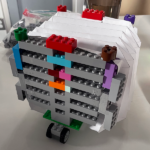
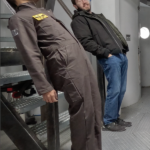
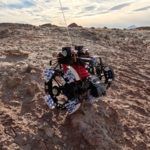
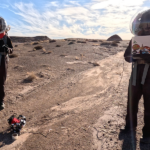
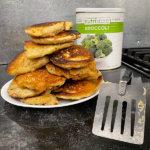
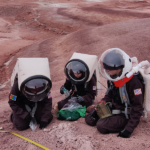
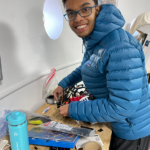
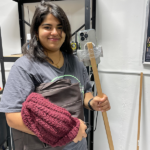
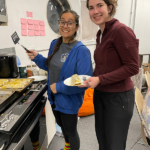
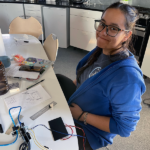
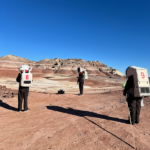
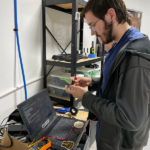

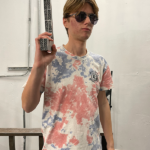
You must be logged in to post a comment.